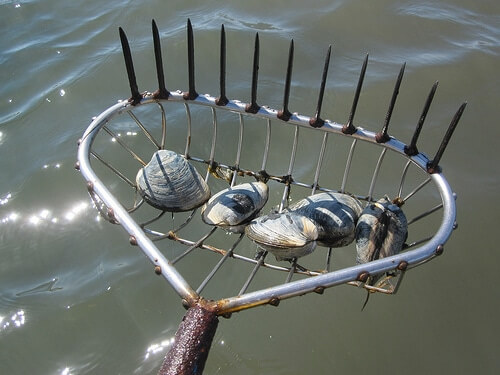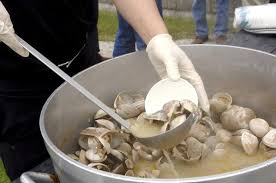Clam Digging 101
Wanted — All wannabe clam diggers!
Although you’ll find a lot of differing opinions and techniques on the subject, here are the basics to get you clam digging on the Outer Banks.
When to go? Low tide, when the water is shallow, is the best time to dig for clams. It’s a bit of a workout, but the payoff is a sweet briny treat.
What do I need? Basically all you need is a floating basket, water shoes, and a clam rake. Or you can just use your hands to dig through the sand, below ankle-deep to knee-deep water. If using a rake, just push it through the sand until you feel it “hit,” then place your rake just past that point, and pull the rake towards you to scoop up the little mollusk.
What can I keep? To be a keeper, the clams must be at least one inch in width. Anything smaller needs to be buried back under the sand so they have more time to grow.
Where to go? On the west side of Oregon Inlet bridge you will find mostly Quahog clams (which are larger), or further south on the sound side of Hatteras Island and on Ocracoke you will find a greater variety of sizes.
Is there a limit? As of this writing the limit is 100 clams per day per person, but not to exceed 200 clams per day. You do not need a fishing license.
How to cook ’em? Once you get your clams home, there are many way to enjoy these tasty treats. You can simply steam or grill them and dip them in garlic butter, or you can make a hearty chowder, and serve it with some crusty bread. If you’re with a group and bring in a good quantity, why not throw a big old clam bake with all the fixings? However you decide to prepare your clams, though, enjoy the fruits of your labor with an ice-cold beer while relaxing on the beach.
Here’s a how-to video by vlogger Rory Anderson:







